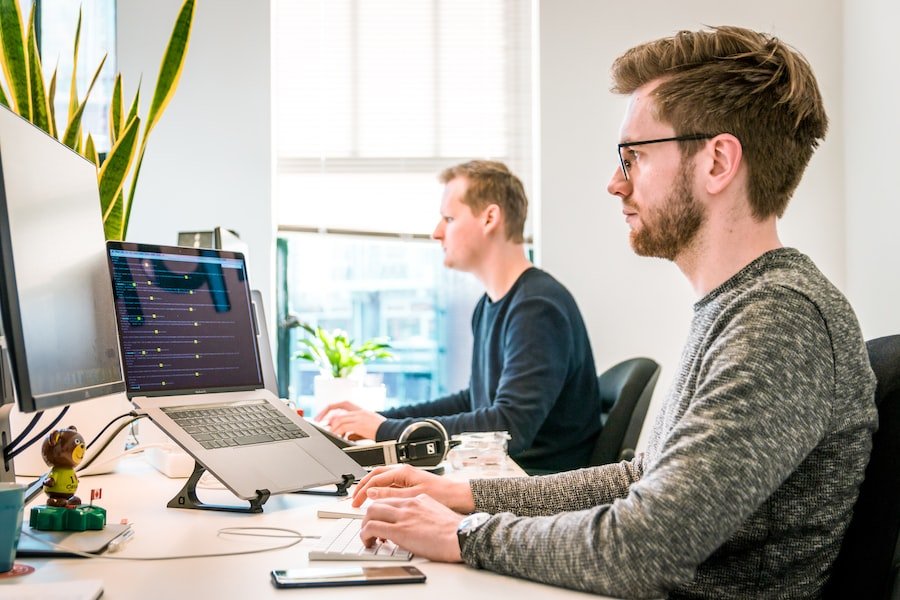
Portimao’s f1 legacy
Portimao, a coastal city in Portugal’s Algarve region, has become a significant Formula 1 racing destination in recent years. This development is due to several
Coworking spaces have become increasingly popular in recent years, providing a flexible and collaborative work environment for professionals from various industries. The concept of coworking originated in the early 2000s, when freelancers and entrepreneurs sought an alternative to working from home or in traditional office settings. The idea behind coworking is to create a shared workspace where individuals can work independently, but also have the opportunity to collaborate and network with like-minded individuals.
Traditional offices are typically characterized by a fixed layout, where employees have assigned desks or cubicles. These offices are often owned or leased by a single company and are designed to accommodate the specific needs of that organization. In traditional offices, employees typically work regular hours and have limited interaction with individuals from other companies or industries.
When comparing traditional offices to coworking spaces, there are several key differences. While traditional offices offer a sense of stability and familiarity, coworking spaces provide a more flexible and dynamic work environment. Coworking spaces are open to individuals from different companies and industries, allowing for greater collaboration and networking opportunities.
One of the main advantages of coworking spaces is the flexibility they offer. Unlike traditional offices, where employees are often tied to a specific location and schedule, coworking spaces allow individuals to choose when and where they work. This flexibility is particularly beneficial for freelancers and remote workers who may need to adjust their working hours or locations based on their personal or professional needs.
Coworking spaces also provide a variety of workspaces to accommodate different work styles. For example, some individuals may prefer a quiet space where they can focus on their work without distractions, while others may thrive in a more social and collaborative environment. Coworking spaces often offer a mix of private offices, dedicated desks, and communal areas, allowing individuals to choose the space that best suits their needs.
In contrast to the flexibility offered by coworking spaces, traditional offices typically have fixed layouts. Employees are assigned to specific desks or cubicles, and the layout of the office is often determined by the needs of the company. While this may provide a sense of stability and routine, it can also limit creativity and collaboration.
The fixed layout of traditional offices can be restrictive, as employees are confined to their designated spaces and may have limited opportunities for interaction with colleagues from other departments or companies. This can hinder innovation and prevent the exchange of ideas that often occurs in more open and collaborative environments.
Community building is a key aspect of coworking spaces. Unlike traditional offices, where employees typically interact primarily with their colleagues, coworking spaces foster a sense of community among individuals from different companies and industries. This sense of community is often facilitated through networking events, workshops, and social activities organized by the coworking space.
Community building in coworking spaces is important for several reasons. First, it provides individuals with a support network and opportunities for collaboration. Coworking spaces often attract individuals with diverse skills and expertise, creating a rich environment for knowledge sharing and collaboration. Second, community building helps to combat the isolation that can come with working independently or remotely. By providing a social and supportive environment, coworking spaces can help individuals feel more connected and engaged in their work.

In traditional offices, interaction between employees is often limited to those within the same department or company. This can lead to a lack of diversity in ideas and perspectives, as employees may not have the opportunity to interact with individuals from different backgrounds or industries.
Limited interaction in traditional offices can also have negative effects on productivity and creativity. Without exposure to new ideas and perspectives, employees may become stagnant in their thinking and struggle to come up with innovative solutions to problems. Additionally, limited interaction can lead to a lack of motivation and engagement, as employees may feel disconnected from their colleagues and the broader workplace community.
One of the advantages of coworking spaces is the wide range of amenities they offer. In addition to providing a workspace, coworking spaces often include amenities such as high-speed internet, meeting rooms, printing and scanning facilities, and kitchen areas. Some coworking spaces may also offer additional perks such as free coffee, snacks, and access to fitness facilities.
These amenities can enhance productivity and well-being by providing individuals with the tools and resources they need to work efficiently. For example, high-speed internet is essential for individuals who rely on technology for their work, while meeting rooms provide a professional space for client meetings or team collaborations. The availability of amenities such as free coffee and snacks can also contribute to a positive work environment by promoting social interaction and creating a sense of comfort and convenience.
While traditional offices may not offer the same range of amenities as coworking spaces, they typically provide basic facilities such as desks, chairs, and access to office equipment. These facilities are essential for employees to carry out their work effectively and efficiently.
However, it is worth noting that the basic facilities offered by traditional offices may not always meet the needs of all employees. For example, some individuals may require specialized equipment or software that is not provided by the company. In these cases, employees may need to bring their own equipment or seek alternative solutions outside of the office.
cocreate coworking is a prime example of a coworking space that fosters community building and flexibility. Located in the heart of downtown Portimao, CoCreate offers a vibrant and collaborative work environment for professionals from various industries.
One of the key features of CoCreate is its flexible workspace options. Members can choose from private offices, dedicated desks, or hot desks, depending on their individual needs and preferences. This flexibility allows individuals to work in a way that suits their work style and schedule, whether they prefer a quiet space for focused work or a more social environment for collaboration.
CoCreate also places a strong emphasis on community building. The space hosts regular networking events, workshops, and social activities to encourage interaction and collaboration among its members. These events provide opportunities for individuals to connect with like-minded professionals, share ideas, and learn from each other’s experiences.
Portimao, a coastal city in Portugal, has seen a rise in the number of coworking spaces in recent years. These spaces cater to a diverse range of professionals, including freelancers, remote workers, and small businesses.
The coworking spaces in Portimao offer a variety of amenities and services to meet the needs of their members. Some spaces provide access to meeting rooms, event spaces, and even on-site cafes or restaurants. Others may offer additional services such as business support, mentoring programs, or access to professional networks.
Compared to other cities, Portimao’s coworking scene is still relatively small but growing rapidly. The city’s vibrant entrepreneurial community and affordable cost of living make it an attractive location for individuals looking for a flexible and collaborative work environment.
Conclusion
In conclusion, coworking spaces have revolutionized the way people work by providing a flexible and collaborative alternative to traditional offices. These spaces offer a range of benefits, including flexibility in terms of location and schedule, opportunities for collaboration and networking, and access to amenities that enhance productivity and well-being.
While traditional offices provide stability and familiarity, they often lack the flexibility and community building opportunities offered by coworking spaces. The fixed layouts of traditional offices can limit creativity and collaboration, while the limited interaction between employees can hinder productivity and innovation.
As the coworking trend continues to grow, it is likely that we will see more innovative and specialized coworking spaces catering to specific industries or work styles. The future of coworking spaces looks promising, as more individuals and companies recognize the benefits of this flexible and collaborative work environment.

Portimao, a coastal city in Portugal’s Algarve region, has become a significant Formula 1 racing destination in recent years. This development is due to several

The Algarve region in Portugal is renowned for its diverse attractions, including its flourishing wine industry alongside its famous beaches and scenic landscapes. The area’s

Portugal’s public transport system is an efficient and convenient way to explore the country. With a variety of modes of transportation available, including metro, tram,
CoCreate Coworking
R. da Porta de São João 17,
8500-604 Portimão
Algarve, Portugal
Monday – Friday: 9:00 – 17:00
Saturday – Sunday: Closed